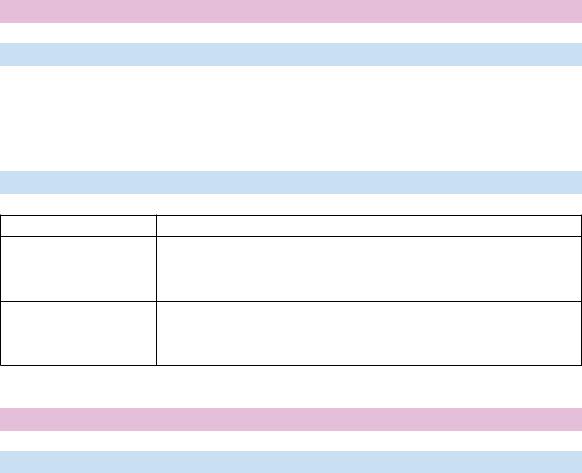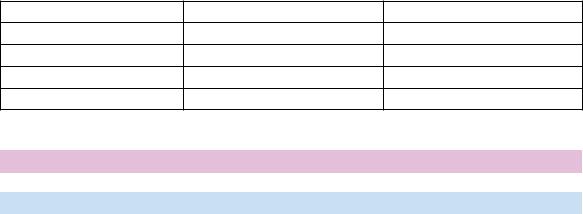
книги2 / 123
.pdf
Task 2e Fill in the gaps in 1-8 with respective painting genres (a-h).
a)landscape
b)seascape
c)still life
d)portrait
e)real life
f)religious work
g)fresco painting
h)history painting
1.A____________ is a work of wall or ceiling art created by applying pigment onto intonaco, or a thin layer of plaster. Its title translates as “fresh” in Italian because intonaco is wet when the paint is applied.
2.A____________ shows objects, such as flowers, food, or musical instruments. It reveals the artist’s skill in painting shapes, light, and shadow.
3.A____________ of art shares a religious message. It might portray a sacred story or express an artist’s faith.
4.A____________ is a photograph, painting, or other work of art which depicts the sea; in other words an example of marine art.
5.A____________ is an outdoor scene. The artist uses paint to create not only land, water, and clouds but air, wind, and sunlight.
6.A____________ is an image of a person or animal. Besides showing what someone looks like, it often captures a mood or personality.
7.A____________ usually depicts a moment in a narrative story, rather than a specific and static subject, as in a portrait. The term is derived from the wider sense of the word historia in Latin and Italian, meaning “story” or “narrative”, and essentially means “story painting”.
8.A____________ scene captures life in action. It could show a busy street, a beach party, a dinner gathering, or any place where living goes on.
Task 2f Bring examples of paintings by Russian artists in each of the above genres. Variation of the task: With your partner, explore a museum’s website and name the genres that you see.
71

TEAMWORK
•In teams, think of your own art movement, give it a name and write its manifesto.
•In teams, prepare a digital art exhibition: think of its theme, select works of art, write the texts on the walls, add music, prepare brochures/invitations. You can also prepare an audio-guide.
For both team projects, you can use padlet.com or any other suitable platform.
GRAMMAR IN CONTEXT (1): NOMINALISATION OF ADJECTIVES
Nominalisation is a grammar tool which is used to turn verbs and adjectives into nouns.
The most common appearance of the nominalised adjective in English is when an adjective is used to indicate a collective group. This happens in the case where a phrase such as the poor people becomes the poor. The adjective poor is nominalised, and the noun people disappears. Other adjectives commonly used in this way include rich, wealthy, homeless, disabled, blind, deaf as well as certain demonyms such as English, Welsh, Irish, French, Dutch.
Task 3a Find in the text (Task 2c) nominalised adjectives and translate them.
APPLYING
Task 3b Read these headlines and decide which part of speech (adjective or noun) the words in bold belong to. Insert articles where necessary.
a)_____ Rich Getting _____Rich (The New York Times)
b)Tax ____ Rich (The New Yorker)
c)____ Poor Takes Care of ____ Poor (The Independent)
d)And _____ Poor Patients! (The New Yorker)
e)It’s ____ Blind Leading ____ Blind (The New York Times)
f)____Poor Will Suffer (The New Yorker)
g)He Went to a School For ____ Deaf, I Went to a School for ____ Deaf (The Guardian)
h)____English Beat (The New York Times)
i)Learn ____ English with BBC (BBC)
j)Well, ____ English Can (The New Yorker)
72

WRITING SKILLS (1): COMMENTING ON ART
Task 4a Study vocabulary commonly used to comment on the works of art. Add antonyms from Task 4b to complete the chart.
ADJECTIVE |
MEANING |
ANTONYM |
|
|
|
a) highbrow |
intended for educated, intelligent people |
|
|
|
|
b) impenetrable |
extremely difficult to understand |
|
|
|
|
c) sophisticated |
showing advanced skills and understanding |
|
|
|
|
d) challenging |
demanding considerable effort to be understood |
|
e) dazzling |
inspiring great admiration because it is brilliant |
|
in some way |
|
|
|
|
|
f) evocative |
calling up images and memories |
|
g) exquisite |
having rare beauty or delicacy |
|
|
|
|
h) intriguing |
interesting because it is strange or mysterious |
|
|
|
|
i) peerless |
better than any other |
|
|
|
|
j) tongue-in- |
not intended to be taken seriously despite |
|
cheek |
appearing serious |
|
|
|
|
Task 4b Choose antonyms from this list to complete the chart above:
a)clumsy
b)dreary
c)earnest
d)lowbrow
e)pedestrian
f)primitive
g)run-of-the-mill
h)transparent
i)undemanding
j)uninspiring
Task 4c Use the vocabulary in Tasks 4a and 4b to describe some paintings in Task 1a. Adjust the table to your needs.
Painting |
Adjectives that describe it |
1.
2.
3.
4.
73

DICTIONARY WORK
Task 4d Use a Thesaurus dictionary to write down synonyms of these adjectives.
a)beautiful _______________________________________________________________
b)impressive _____________________________________________________________
c)inexplicable ____________________________________________________________
d)simple ________________________________________________________________
Task 4e Use a Collocations dictionary to find out some combinations with these verbs.
Word |
Collocations |
portray
express
WORD-BUILDING: ART JOBS AND ART WORKS
Task 4f Complete this chart:
Area |
Person |
Verb |
Product |
|
|
|
|
art |
artist |
to draw |
picture |
|
painter |
______ |
painting (oil or watercolour) |
|
|
______ |
drawing |
|
|
|
|
sculpture |
__________ |
to carve |
bust |
|
|
to mould |
___________ |
|
|
to sculpt |
statue |
|
|
to sculpture |
|
|
|
to make |
|
|
|
|
|
architecture |
___________ |
________ |
building |
|
|
|
cathedral |
|
|
to engineer |
palace |
|
|
to build |
|
|
|
|
|
critique |
___________ |
________ |
critique |
|
|
to critique |
|
|
|
|
|
review |
reviewer |
_________ |
review |
|
|
to write |
|
74

APPLYING
Task 4g Using the above chart, fill in the gaps with a suitable word in the right form. Sometimes more than one choice is possible.
a.After years of studying sculpture, Tim is now a fully-fledged _____________.
b.The _____________ showed us the house plans that she had drawn up.
c.Any _____________by Van Gogh is worth a fortune.
d.The _____________ was careful, however, not to express his personal opinion about works by specific artists.
e.There was a ________of Mozart on his grand piano.
f.Through the ages, ____________ have experimented with paint (trying new pigments or oils, for instance) and with concepts such as perspective and light.
g.This is a prime example of the 1930s _____________.
h.Whoever stole pieces of __________ will be found and arrested, police said Monday.
i._______________ by renowned Liverpool artist Arthur Dooley in 1974, this was the first ever statue to commemorate The Beatles.
j.Some Russian sculptor has created a chocolate _____________of Putin.
YOUR RESEARCH
Task 5 Prepare a 3-minute presentation about an art movement.
TIPS FROM EXPERTS: WHY ART IS IMPORTANT
Task 6a Watch a TED TALK about art at https://www.youtube.com/watch?v=UPk56BR1Cmk: Why is art important? You can use the Listening worksheet in Supplementary Materials Section B4.
Task 6b As you watch the TED TALK again, do the following (1-5):
1.Write down 12-15 one-sentence statements on why art is important.
2.Note down phrases/sentences with figurative language. How do they change the rhetoric?
75

3.Look at the chart below. In which context are these people mentioned? Write down the quotes that the speaker selected for her speech.
4.What’s the role of quotes?
5.How important is it for a journalist/art reviewer to use quotes?
Name |
Occupation |
Quote |
Oscar Wilde
Nietzsche
Antony Gormley
Kendall Gear
EXPLORING THE GENRE (1): WRITING ABOUT AN EXHIBITION
Task 6c In groups, discuss the following questions:
a)Why do people read art reviews?
b)What kind of information should an art review provide?
c)Are art reviews objective or subjective?
d)What kind of language (formal/informal, direct/metaphorical, expressive/neutral) do you expect to see in art reviews?
WRITING ABOUT AN EXHIBITION
Like other writing about art, a review should deepen the reader’s understanding of art history, or enhance the reader’s experience of works of art, or both.
Writing a review requires analytic skills, but a review is not identical to an analysis. An analysis usually focuses on one work or at most a few, and often the work (let’s say Picasso’s Guernica) is familiar to the readers. On the other hand, a review of an exhibition normally is concerned with a fairly large number of works, many of which may be unfamiliar. The first paragraph or two of a review usually provide a helpful introduction, in which a reviewer gives some background material about the painter.
The Impressionist painter Mary Cassatt (1844-1926) was a character of intriguing contradictions. The daughter of a wealthy Philadelphia banker, she led a social life of impeccable gentility, but as an artist in Paris in the late 1870s, she fell in with a disreputable gang of outsiders – the officially denigrated Impressionists.
While she worked on the cutting edge of avant-garde style, she made no overtly challenging images. Over and over she depicted women like herself engaged in polite social or domestic activities or tending their children (though she never married or had children). Her fiercely precise and intelligent art acquired an undeserved reputation for saccharine softness.
(Ken Johnson, “Childless But Fascinated by Intimate Family Life,” The New York Times, December 1, 2000)
76
If the exhibition is devoted to an artist whose work is likely to be familiar to the readers, for instance, work by Monet or Rodin or van Gogh or Norman Rockwell, you will not need to do more in your introduction than to announce the topic – though in an interesting way – and then to get down to business. If, however, the material is relatively unusual, for instance, Japanese calligraphy or prehistoric Inuit carving, you probably will have to educate your reader at the outset. Сonsider Rita Reif’s first two paragraphs about an exhibition of African beadwork:
In West Africa a century ago, beadwork was a status symbol reserved for kings and priests. Skilled artisans, using gloriously coloured glass beads and cowrie shells, devised the ritual artifacts of great fantasy assembled in “African Beadwork:Traditional Symbols,” an exhibition at the Tambaran Gallert, 20 East 76th Street in Manhattan, through June 28.
The 53 pieces on view - crowns, masks, bags and figures – were probably made between 1870 and 1950. The majority were crafted by Yoruban artisans in lands now known as Nigeria. The rest were strung and stitched by Bamileke, Fang and Bamum craftsmen in regions that are today called Cameroon or by the Kuba people in the area now known as Zaire.
(“African Beadwork,” The New York Times, May 19, 1991)
In both of the above examples, the writers are gently educating their readers, who are assumed to be non-specialists. If, however, Reif had been writing in a journal such as African Art, she would not have provided this elementary information.
A review usually includes:
•description
•analysis
•evaluation
A description tells readers what something looks like: how big the exhibition is, how the works are displayed (e.g. crowded together or with plenty of space, on white walls or green, brightly lit or in what John Milton called “a dim religious light”, and it tells us what some of the works look like (“He is a large man, and he fills the canvas”)
An analysis tells readers how some aspects of the exhibition work (“The paintings, crowded together, convey a sense of bristling energy”; “The chronological arrangement makes sense, but in this exhibition it unfortunately means that the last objects a viewer encounters are the weakest”) and what all parts of the exhibition add up to (“Although the show is chiefly devoted to African ritual objects created between 1880 and 1920, it includes a few recent works, all of which are clearly designed for the contemporary tourist trade. These last are interesting in their own way, but their only connection with the other works is that they were made in Africa.”)
An evaluation tells readers whether the exhibition was worth doing, how well it has been done, and whether it is worth seeing – and, of course, these judgements must be supported with evidence.
77

CHECK YOURSELF
Task 6d Answer the questions.
•How is a review different from an analysis?
•What’s the role of introduction?
•If the work/artist is familiar to the reader, what kind of introduction is expected? What if the topic is unfamiliar to the reader?
•What does a review include?
•What does a description do?
•What does an analysis do?
•What does an evaluation do?
Task 6e Find out the meaning of these words. Bring examples of their usage.
•curator
•critique
•contextualisation
PAIR WORK
Task 6f Read about the elements commonly found in exhibition reviews. The first two elements are explained. With your partner, figure out the rest.
CONSTITUENT ELEMENTS OF AN EXHIBITION REVIEW
Element |
Description/explanation |
1. Local Context |
Name of exhibition, name of artist, name of curator, |
|
location of exhibition |
|
|
2.Information about the artist
3. |
Historical/theoretical |
|
|
contextualization |
|
|
|
|
4. |
Physical description of the A relatively basic description of the art, rather than |
|
|
work(s) |
conceptual interpretation, which lets the reader imagine |
|
|
the works. |
|
|
|
5. |
Interpretation |
|
|
of the work(s) |
|
|
|
|
6. |
|
|
78

Task 6g What other elements can an art review comprise? Add your ideas to the chart above.
EXPLORING THE GENRE (2): STRUCTURE OF THE EXHIBITION REVIEW
Task 7a Put the paragraphs (A,B,C,D) under the proper heading (1-3).
1. Introduction (opening paragraph +)
2. Body paragraph(s)
3. Closing paragraph
A.Summarise the point - the thesis that has been emerging throughout the review. A relevant quotation by an artist can often help you write a paragraph that does much more than lamely say, “As I have already pointed out...”
B.Describe the exhibit so visitors know what to expect from it. Discuss the physical specifications of the art, the form, and its content. Additionally, explain how the artwork is installed in the gallery, such as how it’s hung or displayed. Then, specify how visitors can interact with the work.
C.Answer the who, what, where, when, and why. This will provide your reader with a general overview of the exhibit and where they can find it. Tell the reader who the artist is, what style of art they make, where the exhibit is, when it takes place, and why people might be interested in the show.
D.Discuss your opinions about the exhibit and how well the artist presented their ideas and themes. Explain whether or not the exhibit provides new interpretations. Identify the weaknesses and strengths of the exhibition. Support your analysis with facts or observations from the exhibit.
79

Task 7b In the chart above, where would the elements from Task 6f go?Add them accordingly.
YOUR RESEARCH
Task 7c Read the reviews sections in some English-language newspapers or magazines. How is the review structured? Identify the above elements. You can use this link: http:// www.caareviews.org/reviews/exhibition
PAIR WORK
Task 7d In subsection A1, Student 1: read Text A; Student 2: read Text B. Summarise the key points.
Task 7e Interact:
Student 1, ask Student 2 questions about these aspects of a review and register the answers:
Aspect |
Answers |
1)the order of information in a review
2)the physical description and interpretation of works
3)the length of the first draft
4)objectivity of the reviewer/curator
Student 2, ask Student 1 questions to find out about these points related to producing a review:
Producing a review |
Answers |
1)title
2)first draft (the length)
3)taking notes
4)audio programme
5)texts on the walls/brochures/catalogues
80
